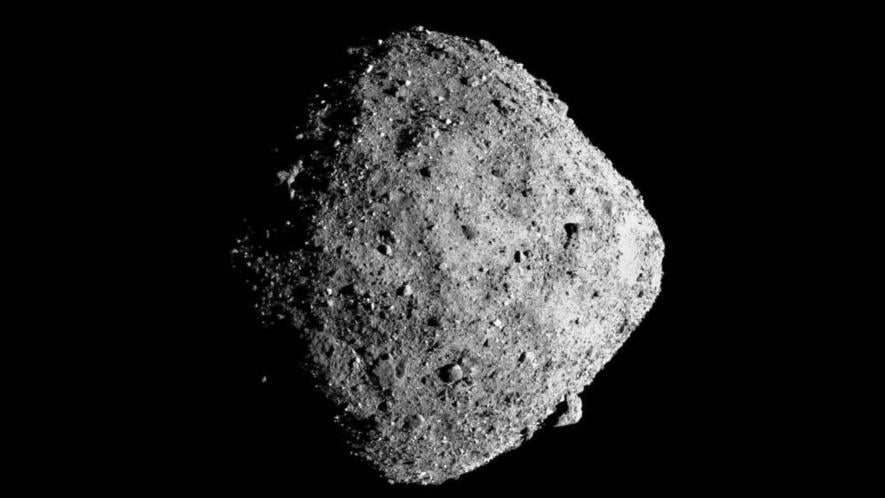NASA's Bennu Sample Smaller than Expected but Yields Valuable Solar System Clues

Image Courtesy: Flickr
Asteroids are an important subject of study in astronomy—they are born as a result of breakaway events from a larger parent body, which happen during cosmic collisions in the asteroid belt of the solar system. The materials in an asteroid can contain the signature of its parent body, and studying them can reveal the still unknown facts about our solar system. Asteroids are rocky remnants that arose during the early periods of the formation of the solar system some 4.6 billion years ago.
In October 2020, the National Aeronautics and Space Administration’s (NASA) ORISIS-Rex Spacecraft successfully landed on the surface of Bennu, the asteroid orbiting in a not-so-far space from Earth, and Bennu’s existence was found in 1999. The sample from Bennu in the OSIRIS-REx sample capsule contained pieces of the asteroid and landed safely in the Utah desert on September 24.
Each asteroid has its own journey and story about its evolution over time. Collecting a sample directly from such an asteroid offers a unique glimpse at the rocks and dust that were left over during the formation of the solar system some 4.5 billion years ago. Bennu is also expected to offer such glimpses.
In the beginning, scientists thought that the sample might weigh about 250 grams of rock, pebbles and dust. The projected quantity was thought to be of weight similar to a large hamster. But, of late, researchers have ‘downgraded’ their earlier estimate.
Importantly, the NASA team got stuck on a problem; they couldn’t open the container where the sample was collected from Bennu’s surface. Researchers at Johnson Space Center, Houston, USA, found that two out of the 35 screws that locked the container (a canister) cannot be opened, as written by Alexandra Witze in Nature about it. However, using tweezers, curators attempted to unlock the canister but in vain. What they could extract is 70.32 grams of dust.
NASA is trying to make new screwdrivers to open the canister that traversed billions of kilometres of trajectory through the solar system. The screwdrivers will have to be made from such materials that don’t contaminate the samples. The samples are currently inside a glove box filled with nitrogen.
Earlier analyses of the dust and pebbles present at the outer surface of the canister showed the presence of clay minerals with water molecules trapped inside their crystals. Within the first period of the analyses, scientists scanned the samples using an electron microscope, infrared measurements, X-ray diffraction, and chemical analysis. The X-ray computed tomography CT scan used to produce the 3D computer model of the particles in the sample highlighted its diverse interior. “This early glimpse provided the evidence of abundant carbon and water in the sample,” a NASA release said.
These early findings were encouraging. A theory about asteroids suggests that carbon- and water-rich asteroids (like Bennu) could have been involved in providing these key components to the Earth's system billions of years ago. The water that scientists have discovered inside the clay mineral crystals of the Bennu samples could be ancient and could have originated from the dawn of the solar system.
According to experts, the carbon-rich material and the presence of water containing clay minerals are just the beginning, hinting at stunning revelations further. NASA says the scientists will continue characterising the samples for the next two years.
Principal investigator Dante Lauretta, however, emphasises that a lot of science is to be done with the 70.3 grams of samples. “We're ecstatic; 60g was the requirement before the mission, and we've already got 70. So, I couldn't be happier,” commented Dante in a statement to BBC News.
The largest piece of Bennu sample form that could be extracted is 3.5 centimetres in diameter, but the majority of the 70.35 grams contains tiny fragments of sub-millimetre size. “There will be some exciting, detailed organic molecular results coming soon. But the team needs a bit more time to think about them because we need to make sure all the results are correct. This is so important; we don't want to make a mistake,” commented Dante.
Get the latest reports & analysis with people's perspective on Protests, movements & deep analytical videos, discussions of the current affairs in your Telegram app. Subscribe to NewsClick's Telegram channel & get Real-Time updates on stories, as they get published on our website.





















